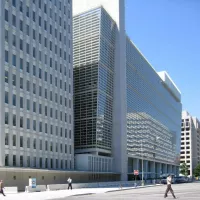New Zealand is an island country located in the southwestern Pacific Ocean, consisting of the North and South Islands and over 600 smaller islands. It is the sixth-largest island country, positioned east of Australia across the Tasman Sea. Known for its diverse topography, including the Southern Alps formed by tectonic activity and volcanic eruptions, its capital is Wellington, while Auckland is its most populous city.
1907: North and South Islands are distinguished on maps
By 1907, it became accepted practice for mapmakers to use "North" and "South" to distinguish New Zealand's two largest islands on maps.
1907: New Zealand becomes a dominion
In 1907, New Zealand became a dominion, signifying its self-governing status within the British Empire.
1908: Participation in Summer Olympics 1908
New Zealand participated at the Summer Olympics in 1908 as a joint team with Australia.
1912: Participation in Summer Olympics 1912
New Zealand participated at the Summer Olympics in 1912 as a joint team with Australia.
1920: First participation in Summer Olympics on its own
New Zealand first participated on its own in the Summer Olympics in 1920.
1921: Median center of population
In 1921, the country's median centre of population was in the Tasman Sea west of Levin in Manawatū-Whanganui.
1922: Introduction of public radio
In 1922, public radio was introduced in New Zealand.
1923: Imperial Conferences decide New Zealand can negotiate treaties
The 1923 Imperial Conferences decided that New Zealand should be allowed to negotiate its own political treaties.
1926: Imperial Conferences decide New Zealand can negotiate treaties
The 1926 Imperial Conferences decided that New Zealand should be allowed to negotiate its own political treaties.
1928: First commercial treaty ratified with Japan
In 1928, New Zealand ratified its first commercial treaty with Japan.
1937: Kermadec Islands become uninhabited
Since 1937, the Kermadec Islands have been uninhabited except for a small number of people at Raoul Island station.
September 1939: New Zealand declares war on Germany
On 3 September 1939, New Zealand allied itself with Britain and declared war on Germany with Prime Minister Michael Joseph Savage proclaiming, "Where she goes, we go; where she stands, we stand".
1940: Development of the New Zealand recording industry
From 1940 onwards, the New Zealand recording industry began to develop.
1947: New Zealand gains full statutory independence
In 1947, New Zealand achieved full statutory independence, while still retaining the monarch as head of state.
1947: New Zealand adopts the Statute of Westminster
In 1947, New Zealand adopted the Statute of Westminster, confirming that the British Parliament could no longer legislate for the country without its consent.
1950: Legislative Council abolished
In 1950, New Zealand's upper house, the Legislative Council, was abolished.
1951: New Zealand joins ANZUS security treaty
In 1951, New Zealand joined Australia and the United States in the ANZUS security treaty.
1960: Start of state-owned television service
In 1960, a state-owned television service began in New Zealand.
1961: Population composition in 1961
In 1961, the census indicated that New Zealand's population was predominantly European (92%) and Māori (7%), with Asian and Pacific minorities making up the remaining 1%.
1965: First New Zealand Music Awards
In 1965, the New Zealand Music Awards were first held by Reckitt & Colman as the Loxene Golden Disc awards.
1970: Samoan Quota Scheme
In 1970, the Samoan Quota Scheme was established, regulating permanent migration to New Zealand.
1973: Export market reduction
In 1973, New Zealand's export market was reduced when the United Kingdom joined the European Economic Community, leading to a severe economic depression.
1975: Waitangi Tribunal set up
In 1975, the Waitangi Tribunal was established to investigate alleged breaches of the Treaty of Waitangi.
1975: 249 municipalities existed
In 1975, there were 249 municipalities in New Zealand.
1978: New Zealand Film Commission started
In 1978, the New Zealand Film Commission started assisting local film-makers.
1979: Energy crisis
The 1979 energy crisis contributed to a severe economic depression in New Zealand.
1982: UNCLOS contributes to New Zealand's exclusive economic zone
After the 1982 UNCLOS, the Kermadec Islands contributed significantly to New Zealand's exclusive economic zone.
1982: Lowest per-capita income
By 1982, New Zealand had the lowest per-capita income of all the developed nations surveyed by the World Bank.
1984: Agricultural sector deregulation
In the mid-1980s, specifically 1984, New Zealand began deregulating its agricultural sector by phasing out subsidies over a three-year period.
1985: Waitangi Tribunal enabled to investigate historic grievances
In 1985, the Waitangi Tribunal was enabled to investigate historic grievances.
1986: British government's residual legislative powers removed
In 1986, the British government's residual legislative powers were removed by the Constitution Act.
1987: Telecom New Zealand formation
In 1987, Telecom New Zealand was formed, initially as a state-owned enterprise, ending the New Zealand Post Office's monopoly over telecommunications.
1987: Māori language declared official language
In 1987, the Māori language (te reo Māori) was declared one of New Zealand's official languages.
1987: Share market crash
The 1987 share market crash led to a peak in unemployment in the early 1990s.
1989: Local government reorganised
In 1989, the New Zealand government reorganised local government into the current two-tier structure of regional councils and territorial authorities.
1990: Dairy cow population increase
Between 1990 and 2007, the number of dairy cows in New Zealand doubled.
1990: Telecom New Zealand privatization
In 1990, Telecom New Zealand was privatized.
1991: Unemployment peaked
In 1991, unemployment peaked just above 10% following the 1987 share market crash.
1992: Formation of Crown Research Institutes
Crown Research Institutes (CRIs) were formed in 1992 from existing government-owned research organizations to research and develop new science, knowledge, products and services.
1992: Unemployment peaked
In 1992, unemployment remained high, peaking just above 10% following the 1987 share market crash.
1993: End of first-past-the-post voting system
Almost all general elections between 1853 and 1993 in New Zealand were held under the first-past-the-post voting system.
1993: Railway privatization
New Zealand's railways were privatised in 1993.
1994: Press freedom ranking since 1994
Since 1994, Freedom House has consistently ranked New Zealand's press freedom in the top twenty.
1995: Regular sailing success in the America's Cup
New Zealand has seen regular sailing success in the America's Cup regatta since 1995.
1996: Mixed-member proportional representation (MMP) used
Since the 1996 election, New Zealand has used a form of proportional representation called mixed-member proportional (MMP).
1997: Forest occupies 23% of land
By 1997, forests occupied only 23% of the land in New Zealand due to deforestation.
2000: Growth of the local fashion industry since 2000
Since 2000, the local New Zealand fashion industry has grown significantly, doubling exports and increasing from a handful to about 50 established labels.
2001: Exhibitions in the Venice Biennale
In 2001, New Zealand art was showcased with exhibitions in the Venice Biennale.
2002: Pacific Access Category
In 2002, the Pacific Access Category was introduced, allowing up to 750 Pacific Islanders to become permanent New Zealand residents each year.
2002: Increased international student numbers
In 2002, the number of fee-paying international students and international exchange students increased sharply, with more than 20,000 studying in public tertiary institutions.
2003: Final rights of appeal to British courts abolished
In 2003, New Zealand abolished final rights of appeal to British courts.
2004: Railway re-nationalisation
Between 2004 and 2008, New Zealand's railways were re-nationalised by the government in stages.
2004: "Paradise Now" exhibition in New York
In 2004, New Zealand art was exhibited in the "Paradise Now" exhibition in New York.
2006: New Zealand Sign Language declared official language
In 2006, New Zealand Sign Language became one of New Zealand's official languages, understood by 22,986 people (0.5%).
2006: Discovery of unique land mammal fossils
In 2006, bones from a unique, mouse-sized land mammal at least 16 million years old were discovered in New Zealand.
2007: Seasonal workers scheme introduced
A seasonal workers scheme for temporary migration to New Zealand was introduced in 2007.
2007: Unemployment rate
In 2007, New Zealand's unemployment rate fell to 3.7%, ranking third from twenty-seven comparable OECD nations.
2007: Vineyards overtaking wool exports
In 2007, the number of vineyards doubled, overtaking wool exports for the first time.
April 2008: Free Trade Agreement with China
On 7 April 2008, New Zealand and China signed the New Zealand–China Free Trade Agreement, the first such agreement China had signed with a developed country.
2008: Railway re-nationalisation
Between 2004 and 2008, New Zealand's railways were re-nationalised by the government in stages.
2008: Financial crisis effect
The 2008 financial crisis had a major effect on New Zealand, with the GDP shrinking for five consecutive quarters.
2009: Ultra-Fast Broadband rollout
A large-scale rollout of gigabit-capable fibre to the premises, branded as Ultra-Fast Broadband, began in 2009.
2009: Pacific Islanders employed under the seasonal workers scheme
In 2009, about 8,000 Pacific Islanders were employed under the seasonal workers scheme in New Zealand.
2009: New Zealand Geographic Board discovers unformalised island names
In 2009, the New Zealand Geographic Board discovered that the names of the North Island and South Island had never been formalised.
2009: Immigration target set
In 2009, the New Zealand Immigration Service set an annual target of 45,000–50,000 permanent residence approvals. This target equated to more than one new migrant for every 100 New Zealand residents.
2009: Unemployment rate increase
In late 2009, the unemployment rate in New Zealand rose back to 7% due to the 2008 financial crisis.
2011: Chorus split from Telecom
Chorus was split from Telecom (now Spark) in 2011.
2012: Partnership arrangement with NATO
In 2012, New Zealand established a partnership arrangement with NATO under the Partnership Interoperability Initiative.
2013: Island names are formalised
In 2013, the names of the North Island and South Island were formally set as North Island or Te Ika-a-Māui, and South Island or Te Waipounamu.
2013: New Zealand citizens living in Australia
In 2013, there were about 650,000 New Zealand citizens living in Australia, which is equivalent to 15% of the population of New Zealand.
2014: Food product exports
In 2014, food products made up 55% of the value of all the country's exports, with wood being the second largest earner (7%).
2015: Press freedom ranking in 2015
In 2015, New Zealand had the 19th freest media according to Freedom House.
2015: Renewable energy generation
In 2015, renewable energy generated 40.1% of New Zealand's gross energy supply.
2015: Gross expenditure on R&D
In 2015, the total gross expenditure on research and development (R&D) as a proportion of GDP was 1.23%.
2015: Gold production
New Zealand's gold production in 2015 was 12 tonnes.
2016: Leading causes of death
In 2016 the leading cause of death was cancer at 30.3%, followed by ischaemic heart disease (14.9%) and cerebrovascular disease (7.4%).
2016: Livability rankings
In 2016, Auckland was ranked the world's third most liveable city and Wellington the twelfth by the Mercer Quality of Living Survey.
2016: Tourism contribution to GDP
In 2016, tourism contributed $12.9 billion (or 5.6%) to New Zealand's total GDP and supported 7.5% of the total workforce.
2016: New Zealand Space Agency Creation
The New Zealand Space Agency was created by the government in 2016 for space policy, regulation and sector development.
2017: UN ranking of infrastructure development
As of 2017, the United Nations International Telecommunication Union ranked New Zealand 13th in the development of information and communications infrastructure.
2017: Median center of population
By 2017, the country's median centre of population had moved 280 km north to near Kawhia in Waikato.
2017: US Department of State human rights report
In 2017, a human rights report by the United States Department of State voiced concerns regarding the social status of the Māori population in New Zealand.
2017: Increase in international visitor arrivals
In 2017, international visitor arrivals were expected to increase at a rate of 5.4% annually up to 2022.
2017: Other exports
In 2017–18, other exports included meat (8.8%), wood and wood products (6.2%), fruit (3.6%), machinery (2.2%) and wine (2.1%).
June 2018: Dairy product exports
In the year to June 2018, dairy products accounted for 17.7% ($14.1 billion) of total exports.
2018: Most widely spoken non-official languages in 2018
As recorded in the 2018 census, Samoan is the most widely spoken non-official language (2.2%), followed by "Northern Chinese" (including Mandarin, 2.0%), Hindi (1.5%), and French (1.2%).
2018: Electorate data based on census
Based on the 2018 census data, there are 72 electorates in New Zealand, and the remaining 48 of the 120 seats are assigned so that representation in Parliament reflects the party vote.
2018: Gross expenditure on R&D
In 2018, the total gross expenditure on research and development (R&D) as a proportion of GDP rose to 1.37%.
2018: Overseas-born population in 2018 census
In the 2018 census, 27.4% of the population counted were not born in New Zealand.
2018: Religion data from 2018 census
In the 2018 census, 48.2% of the population reported having no religion.
2018: New Zealand census
The 2018 New Zealand census had a lower resident population than the 2023 census.
2018: Median age
The median age of the New Zealand population at the 2018 census was 37.4 years.
September 2019: Population above 5 million
In September 2020 Statistics New Zealand reported that the population had climbed above 5 million people in September 2019, according to population estimates based on the 2018 census.
2019: Low voter turnout in local elections
42% of eligible New Zealanders voted in the 2019 local elections.
2019: Life expectancy
Life expectancy in New Zealand in 2017–2019 was 80.0 years for males and 83.5 years for females.
June 2020: Population increase rate
New Zealand's population increased at a rate of 1.9% per year in the seven years ended June 2020.
September 2020: Population above 5 million
In September 2020 Statistics New Zealand reported that the population had climbed above 5 million people in September 2019, according to population estimates based on the 2018 census.
2020: Poverty in ethnic minorities
As of 2020, poverty had a disproportionately high effect in ethnic-minority households, with a quarter (23.3%) of Māori children and almost a third (28.6%) of Pacific Islander children living in poverty.
2020: Fertility rate
In 2020, New Zealand's total fertility rate was 1.6, which is above the OECD average.
September 2021: Youth unemployment rate
During the September 2021 quarter, the general unemployment rate was around 3.2%, while the unemployment rate for youth aged 15 to 24 was 9.2%.
December 2021: Lowest unemployment rate
In December 2021, New Zealand recorded the lowest unemployment rate using the current methodology, at 3.2% during the COVID-19 pandemic.
2021: Formal qualifications in 2021
In 2021, among the population aged 25–64, 13% had no formal qualification, 21% had a school qualification, 28% had a tertiary certificate or diploma, and 35% had a bachelor's degree or higher.
June 2022: Child poverty rate
As of June 2022, New Zealand had 12.0% of children living in low-income households that have less than 50% of the median equivalised disposable household income.
2022: Low voter turnout in local elections
A historically low 36% of eligible New Zealanders voted in the 2022 local elections.
2022: Projected tourism increase
In 2017, international visitor arrivals were expected to increase at a rate of 5.4% annually up to 2022.
2022: Human Development Index Ranking
In 2022, New Zealand was ranked 16th in the Human Development Index and fourth in the Index of Economic Freedom.
2022: Ultra-Fast Broadband target
The Ultra-Fast Broadband rollout had a target of being available to 87% of the population by 2022.
July 2023: Free Trade Agreement with the European Union
In July 2023, New Zealand and the European Union entered into the EU–New Zealand Free Trade Agreement, which eliminated tariffs on several goods traded between the two regions.
October 2023: Record net migration gain
In October 2023, New Zealand achieved a record net migration gain of 135,500 people. Immigrants from India, China, and the Philippines were the largest contributors to New Zealand's population growth.
November 2023: Christopher Luxon becomes Prime Minister
Since 27 November 2023, Christopher Luxon is the 42nd and current prime minister of New Zealand.
2023: New Zealand ranks high in democratic institutions and transparency
As of 2023, New Zealand is ranked second in the strength of its democratic institutions and third in government transparency and lack of corruption.
2023: GDP per capita
As of 2023, New Zealand's nominal gross domestic product (GDP) per capita was United States dollar48,071.
2023: Religion data from 2023 census
At the 2023 census, 51.6% of the population reported having no religion.
2023: 2023 census results
In 2023, the census data showed that 62.1% of residents identified as New Zealand European, while 17.8% identified as Māori. Other ethnicities, including Chinese, Indian, Samoan, and Filipino, were also represented. Statistics New Zealand allowed multiple ethnicity responses, leading to a total exceeding 100%.
2023: New Zealand census
The 2023 New Zealand census enumerated a resident population of 4,993,923.
June 2024: Population distribution
As of June 2024, approximately 76.5% of New Zealand's population lived in the North Island and 23.5% in the South Island.
2024: Global Peace Index Ranking
According to the 2024 Global Peace Index, New Zealand was ranked as the 4th most peaceful country in the world.
October 2025: Total population estimate
As of October 2025, the total population of New Zealand was estimated to be 5,231,143.
2025: Cricket Council Men's Test Team Rankings
In 2025, New Zealand is ranked 5th in the International Cricket Council Men's Test Team Rankings with a rating of 100.
2025: Global Innovation Index Ranking
New Zealand was ranked 26th in the Global Innovation Index in 2025.
2050: Projected demographics
By 2050, the median age in New Zealand is projected to rise to 43 years and the percentage of people 60 years of age and older to rise from 18% to 29%.
Mentioned in this timeline
Germany officially the Federal Republic of Germany is a Western...
China officially the People's Republic of China PRC is an...
Japan is an East Asian island country situated in the...

The World Bank is an international financial institution offering loans...
Australia officially the Commonwealth of Australia encompasses the Australian mainland...

Music is a cultural universal involving the arrangement of sound...
Trending

8 months ago Adam Sandler in 'Jay Kelly' with George Clooney; Rival movie releases compared.
2 months ago Eddy Piñeiro: 49ers Kicker, NFL's Second-Most Accurate, Cherishes Relationship With His Father.
Ameer Abdullah is a professional American football running back currently playing for the Indianapolis Colts in the NFL Drafted by...

7 months ago Jennifer Garner and John Miller share passionate kiss; Ben Affleck spotted solo.

3 months ago Kyle Juszczyk's wife, Kristin, shares the beginning of their love story and career support.

Tom Brady is a retired American football quarterback renowned as one of the greatest of all time He played seasons...
Popular

Tucker Carlson is an American conservative political commentator known for...

Candace Owens is an American conservative political commentator and author...

XXXTentacion born Jahseh Dwayne Ricardo Onfroy was a controversial yet...

Ben Shapiro is a prominent American conservative political commentator media...

William Franklin Graham III commonly known as Franklin Graham is...

Bill Gates an American businessman and philanthropist revolutionized personal computing...